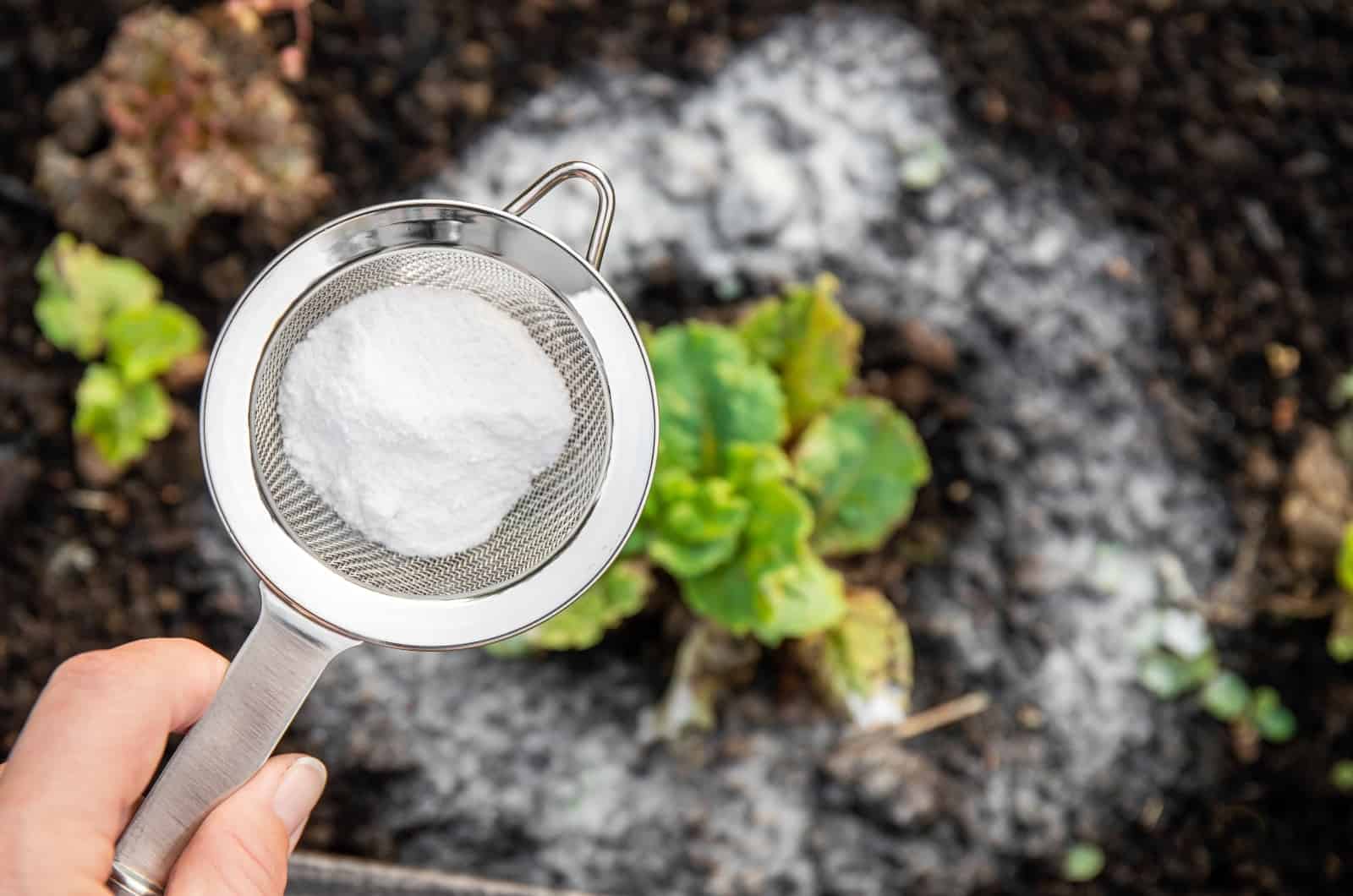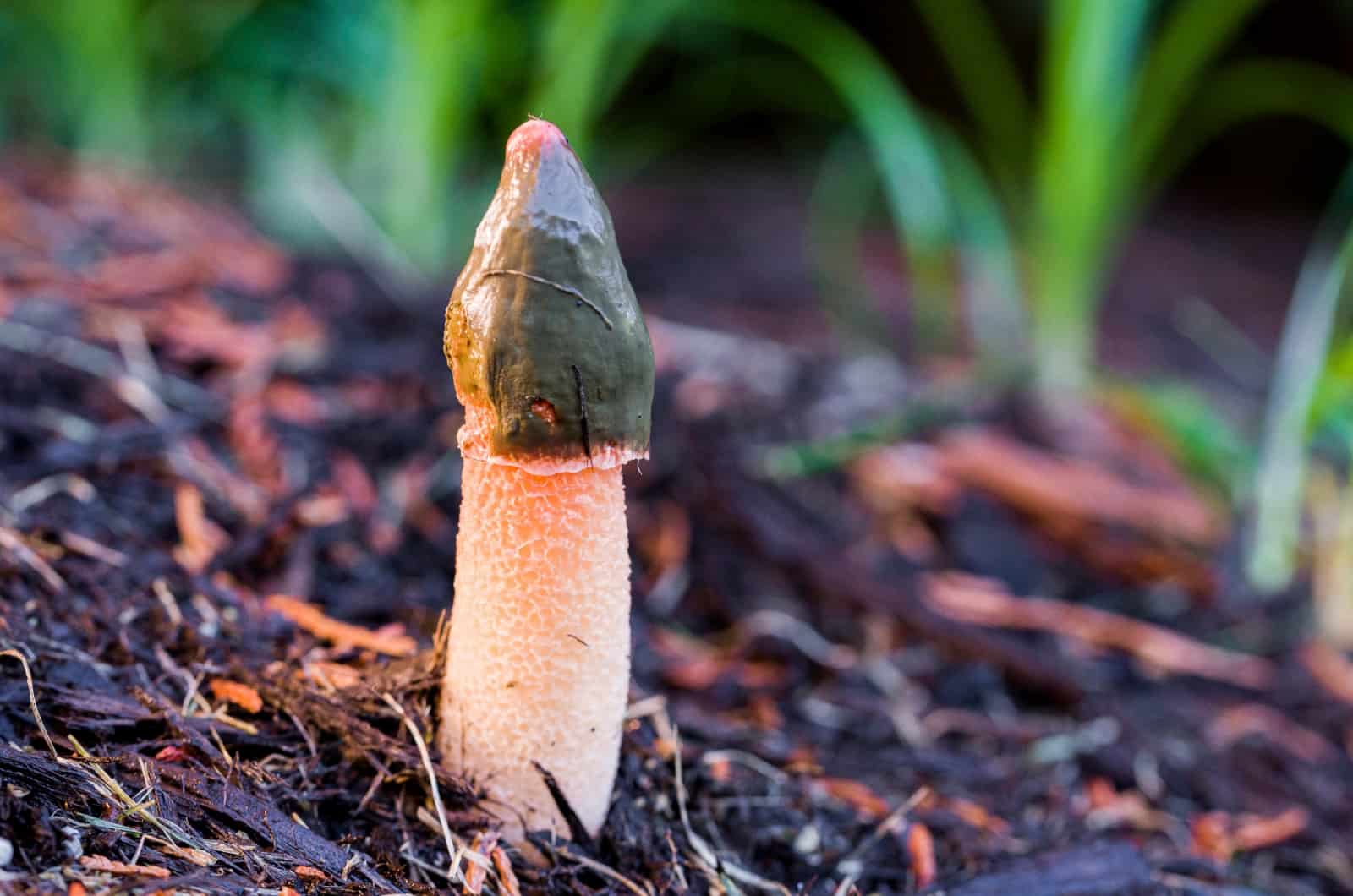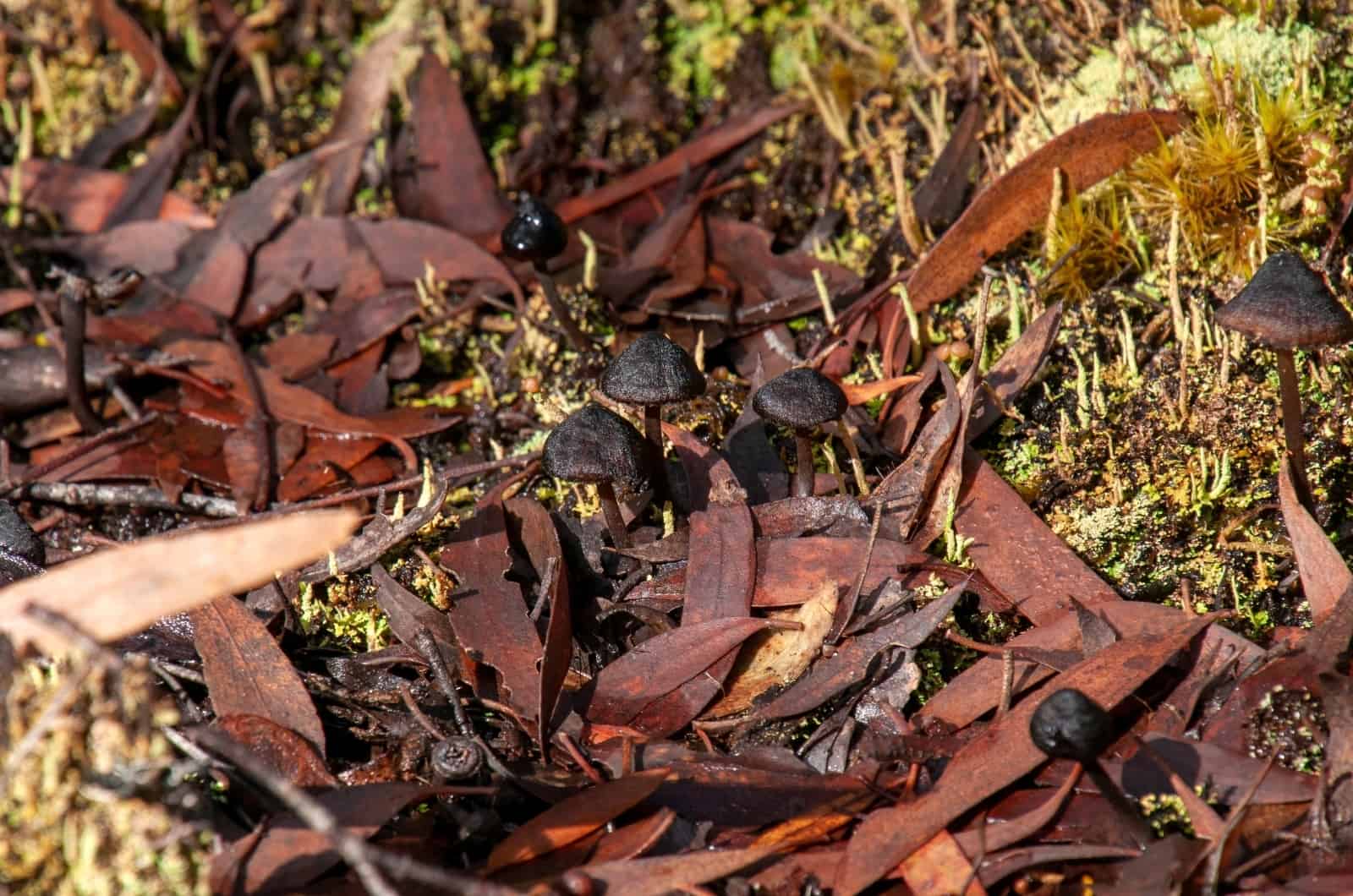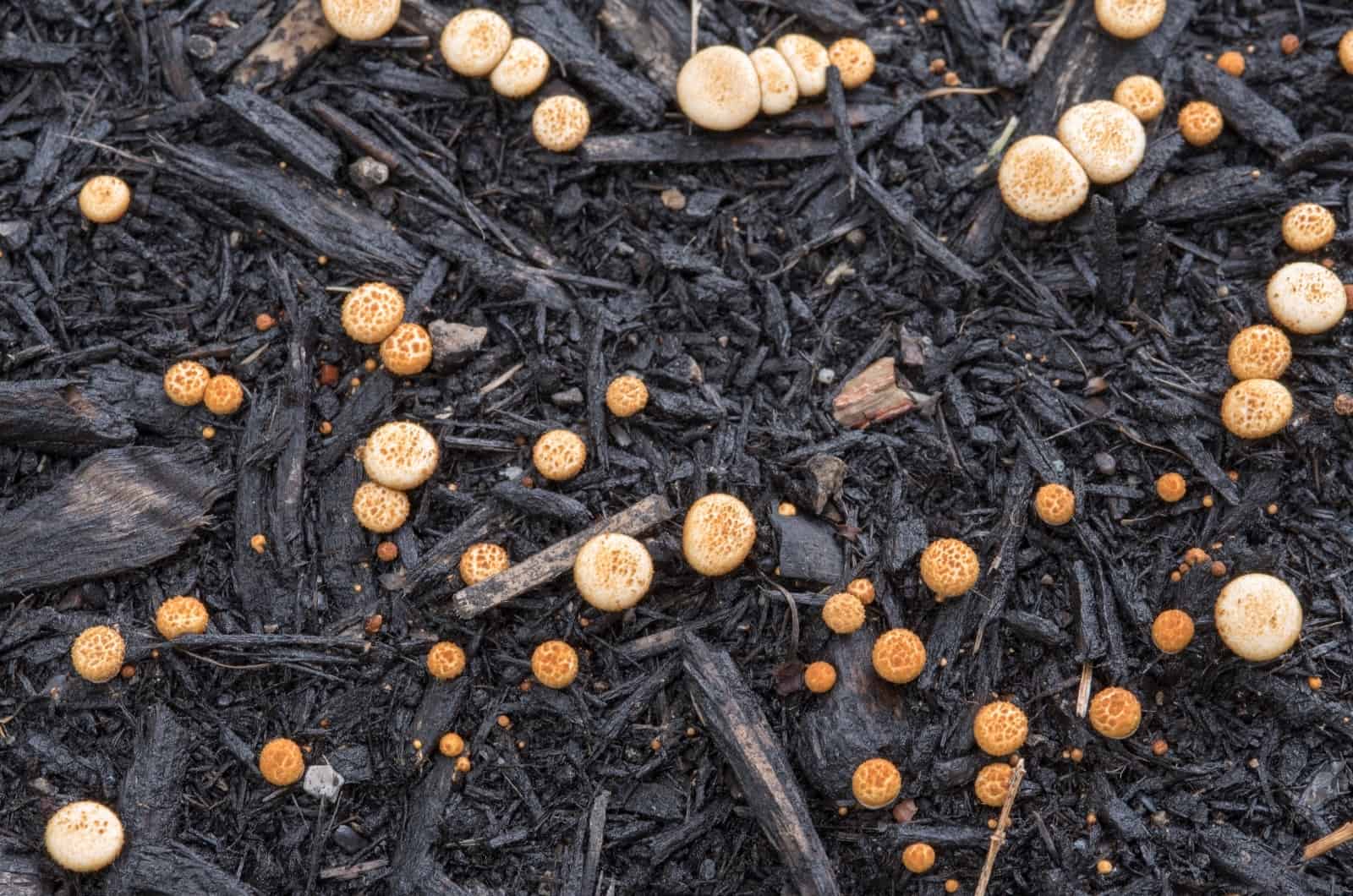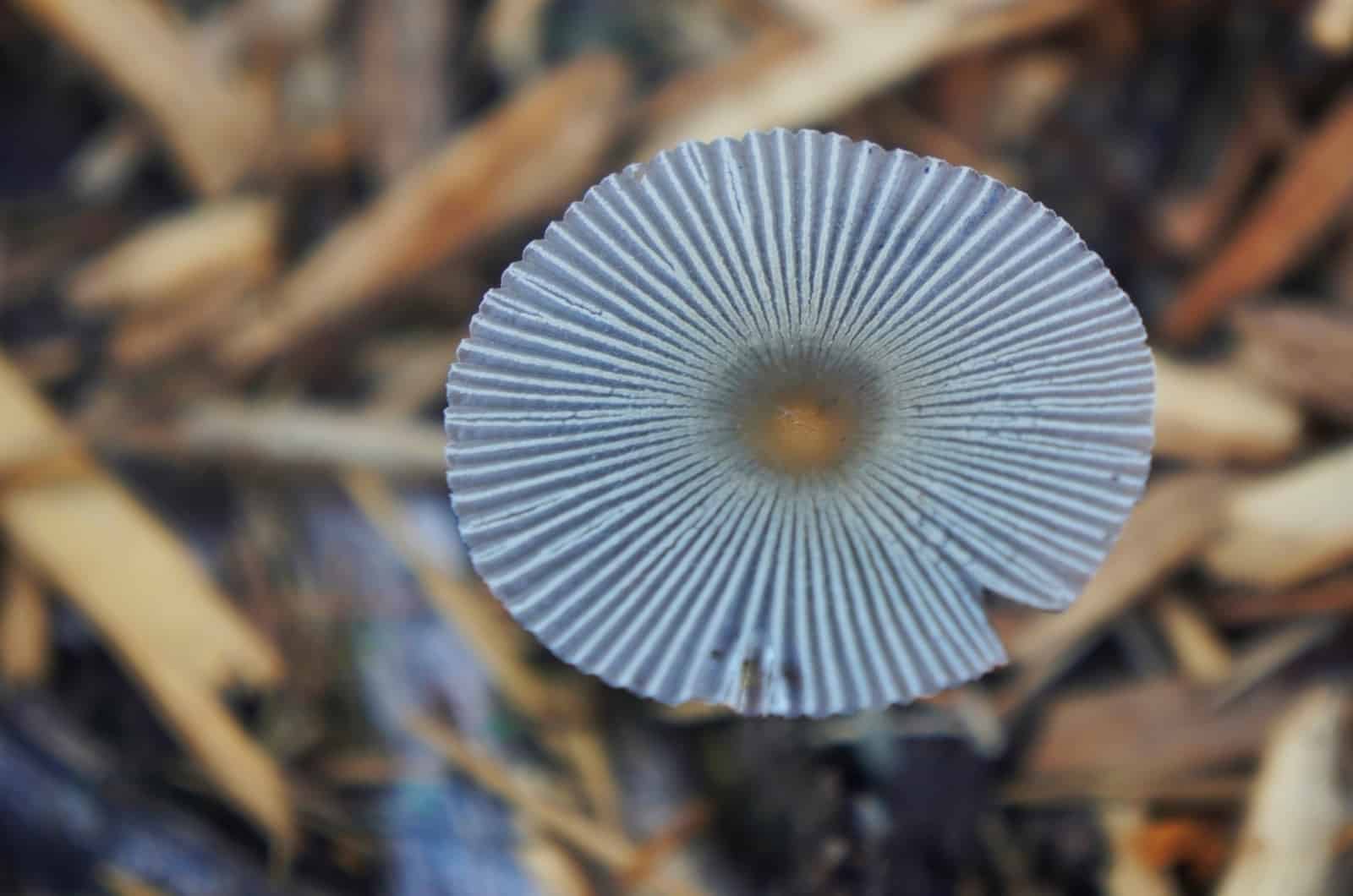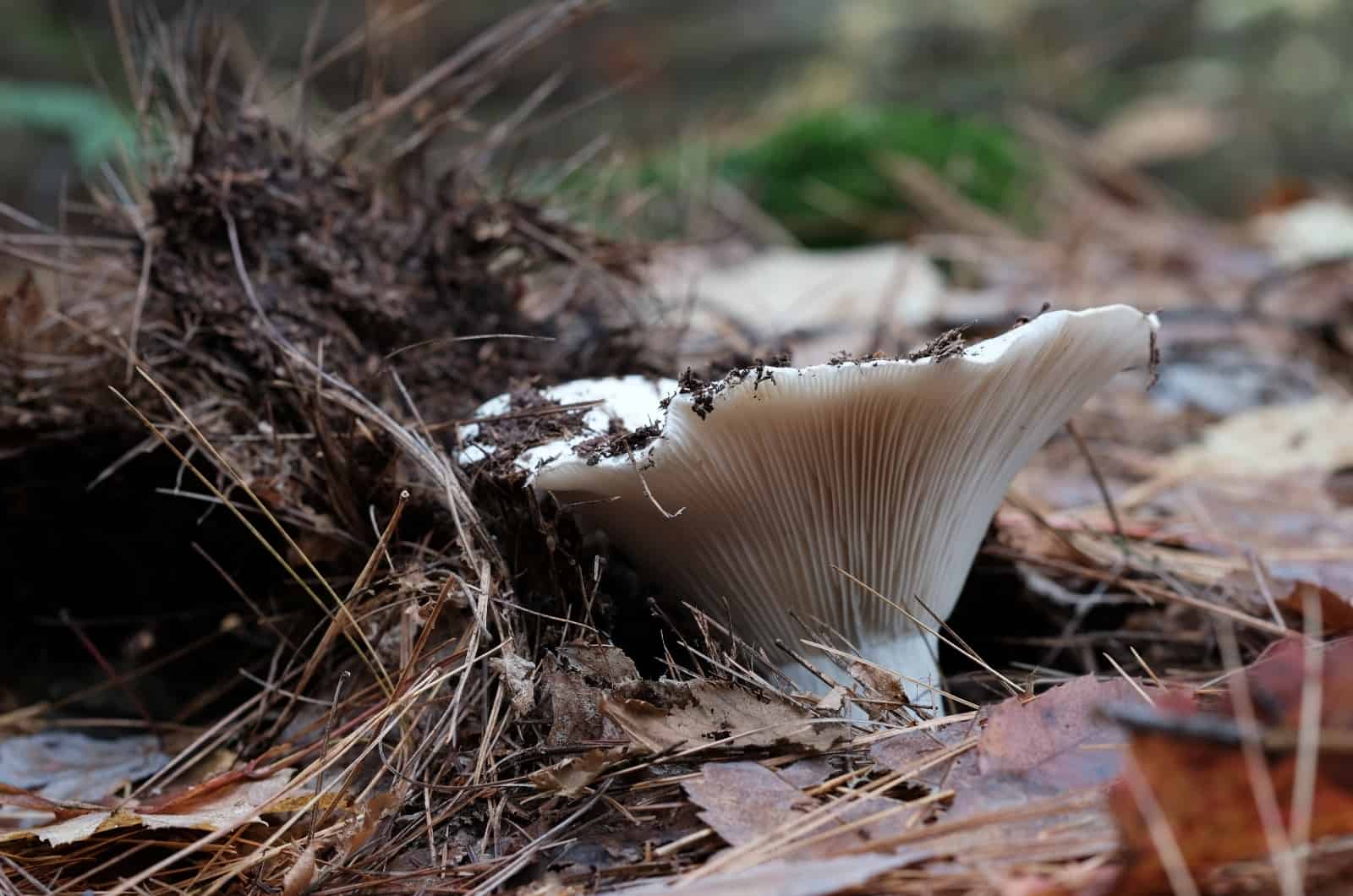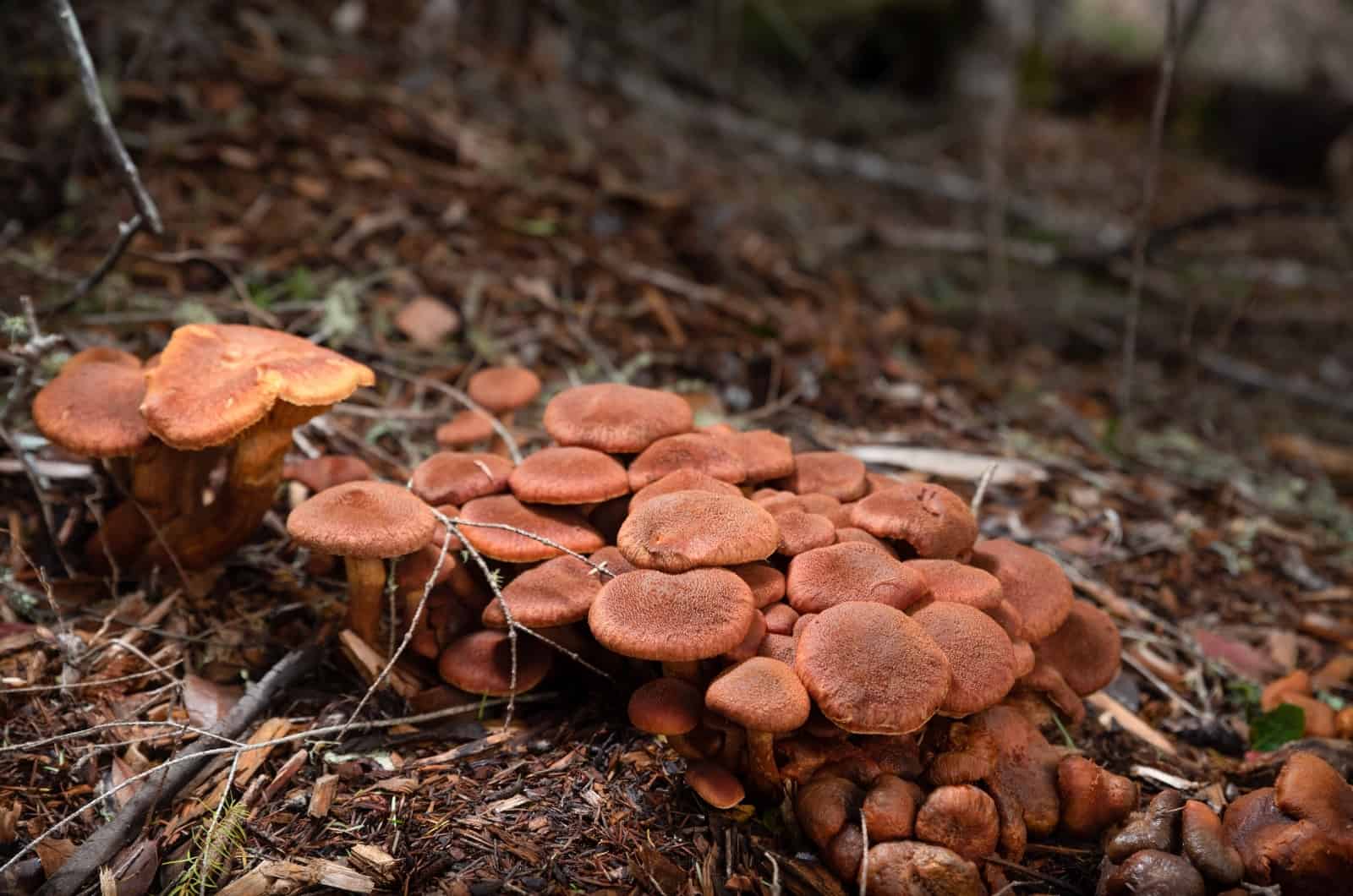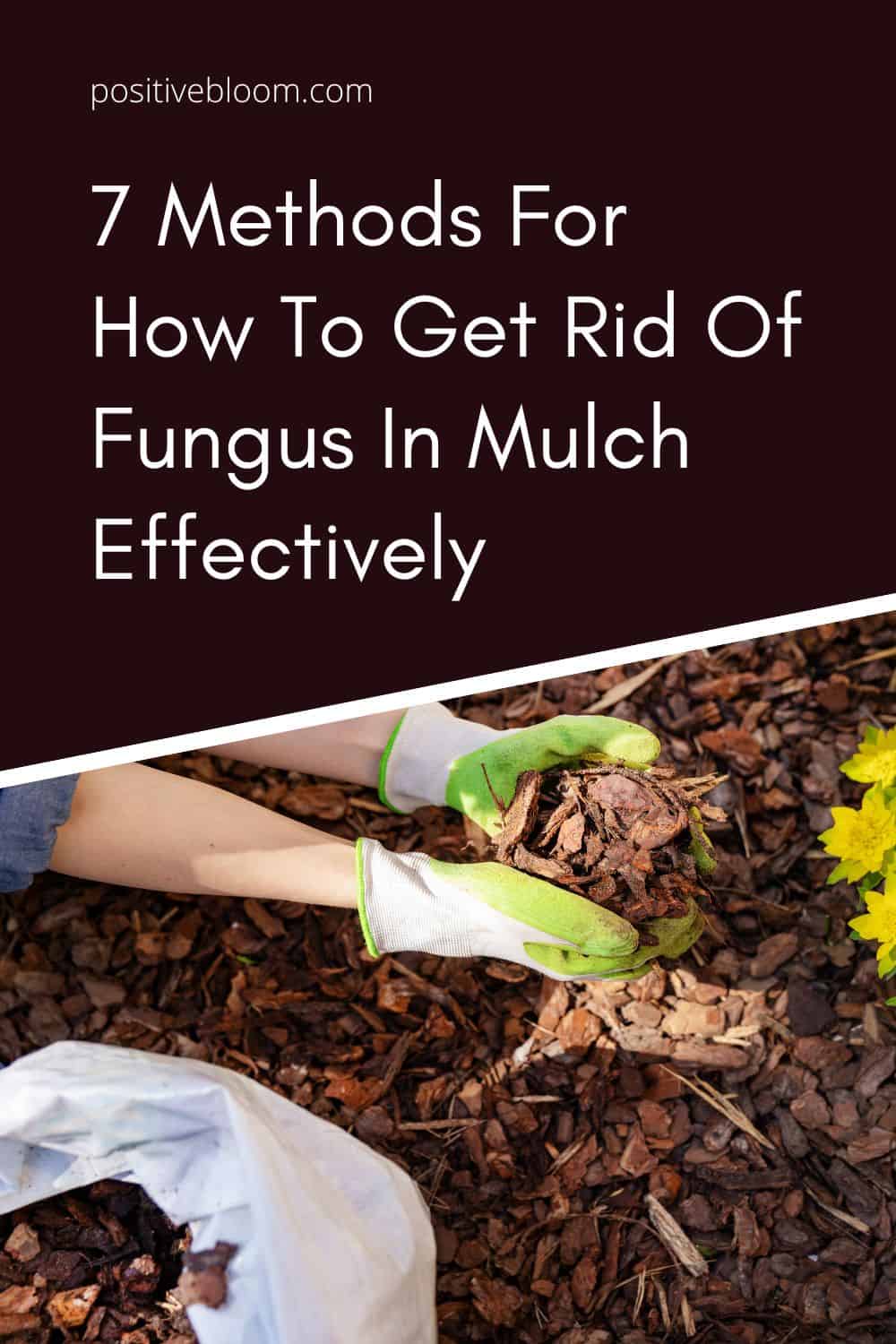Many dream of having a lovely and blooming garden, but when exploding mushrooms and yellow slimes appear on their mulch, the dream is tainted.
Thankfully, we have seven methods and techniques that will help you learn how to get rid of fungus in mulch and may even inspire you to think of other ways yourself.
On the other hand, fungus in mulch doesn’t pose any real danger to you, so you don’t have to disturb it if you don’t want to.
We also included some preventive methods and different types of fungus so that you can keep your garden beds attractive at all times.
How To Get Rid Of Fungus In Mulch Efficiently
The best way to remove fungus from mulch is to scoop them by hand and carefully deposit them in a plastic bag so that they don’t spread their spores all over your garden, especially if you’re dealing with artillery fungus or slime mold.
However, there are other methods you can try, such as reducing the soil acidity or using baking soda, bleach, cornmeal, vinegar, or fungicides.
We do have to mention that fungi and mushrooms are decomposers, and if you speed up the decomposition process, they’ll disappear on their own.
You can do this by raising the temperature to about 105 degrees Fahrenheit. Collect the mulch, water it, and leave it in a sunny spot where the natural sunlight increases the temperature and destroys the fungus.
1. Remove Fungus By Hand
Be careful when removing the fungus growing on your hardwood mulch so that you don’t accidentally spread the spores throughout your yard.
In this case, you’ll need to remove the visible part, seal it in a plastic bag, and throw it away. (Don’t add it to your compost because it will spread spores.)
Then, remove the top layer of mulch, add a fresh layer, and you’re done!
This technique is best for mushrooms and fungi with a fruiting body, such as stinkhorn and toadstool mushrooms.
You should wear a mask, goggles, long sleeves, and trousers when doing this since some fungi can cause allergic reactions or skin irritations.
2. Adjust The pH Level Of The Mulch
Most fungi thrive in moist and warm conditions and acidic soils and mulches, so increasing the soil pH can rid your flower beds of this problem.
The best way to raise the pH level is to add liquid lime since it works immediately. You can also use slow-release agents if you don’t want to create alkaline conditions which would harm your plants. Finally, you can always try out wood ash if you prefer natural solutions.
Of course, you have to be careful when changing the soil pH level since some plant species can detect even the slightest change and have a bad reaction.
Therefore, always start with small quantities, don’t spread lime or ash too close to the roots, and research your plants’ pH requirements beforehand.
3. Use Baking Soda Solution
There are many simple ways of reducing fungal colonies, but using a baking soda solution is one of the first places you should look for a solution.
You can sprinkle it over the mulch to raise the pH level, or you can make a spray to kill the fungi.
To make a baking soda solution, mix two teaspoons of baking soda with a gallon of water, mix it thoroughly, and use it to slowly water your garden beds.
It needs a couple of hours or days to start working, but it will soon make the soil alkaline and prevent the sprouting of new fruiting bodies. This method can also help you get rid of white fungus balls in the soil.
4. Apply Bleach
Bleach is a strong agent and can hurt your plants if you use it on its own. But if you dissolve 1 part bleach in 9 parts water, you’ll create a homemade fungicide that will effectively treat fungal growth in mulch beds.
Once you spray the solution, you can pick off the toadstools and stinkhorns and scrape away the slime mold. You can even use this solution to remove the stains from artillery fungus.
Once you’re done with that, remove the top layer of mulch and replace it with a fresh one.
5. Use Cornmeal Mixture
Cornmeal has antifungal properties, which makes it an excellent weapon in fighting mulch fungus.
All you need to do is mix a cup of cornmeal with a gallon of water, let it soak for a bit, and then pour it over your infected mulch.
6. Make Vinegar Spray
The acetic acid in vinegar can effectively combat spores and fungi, but it can also lower the soil pH and hurt plants, so you have to be very careful when using it.
Use apple cider vinegar (or any other variety with a low acid percentage) diluted one part in four parts water, and spray it over infected areas. Let the mulch dry and repeat the process if necessary.
Finally, avoid using vinegar on rainy days because it will wash away into the soil and won’t work properly.
7. Use Fungicides
If you need to bring out the big guns to stop mold growth in your mulch, you can turn to fungicides. Simply follow the instructions on the package, and the fungi will be gone before you know it.
However, chemicals can pollute the soil and harm wildlife, which is why many gardening experts don’t recommend them.
You can opt for more organic solutions or even neem oil, but you should know that they don’t work as fast.
Still, if you avoid having to deal with contaminated soil and unhealthy plants, it’s worth the wait!
What Causes Fungus On Mulch?
The main causes of fungus in mulch are too much moisture and insufficient sunlight. Of course, the nursery soil or organic fertilizers may sometimes be infected, which is why you should be very careful about those.
Furthermore, hardwood mulch is more prone to fungus growth, so you should research different types of mulch for potted plants (and in-ground ones) until you find the best one.
Excess Moisture
Fungi flourish in moist conditions, so if you water your plants every day, you’ll quickly notice mold growth. Different irrigation systems, such as sprinklers or misting set-ups, keep the mulch constantly wet and encourage fungi development.
Therefore, irrigate your plants less often but more heavily. Furthermore, you should remove the mulch when watering your plants if possible. This will ensure you don’t constantly wet it.
This technique also allows plants to absorb more moisture, keeping everyone happy.
Lack Of Light
If your plants don’t get enough sunlight, their mulch won’t dry out quickly enough, and the bottom parts will remain constantly wet, which will result in mold growth.
Also, fungi cannot photosynthesize, so they don’t need sunlight to grow, and lack of light won’t make them grow any slower.
Therefore, locate your flower beds in sunny spots and rake the mulch frequently so that even the bottommost parts can get exposed to sunlight and dry out.
Infected Growing Medium
Sometimes, plants brought home from your local garden store can contain soil infected with fungi spores.
The fungi from your garden could also have spread all over your yard and infected everything! Or the store-bought soil could be infected!
There are so many prophecies of doom here, which is why it’s better to be prepared.
In order to prevent these issues, you should repot your newly-bought plants in sterilized soil and be very careful when removing fungi from your garden so that they don’t burst and contaminate everything.
Contaminated Organic Fertilizers
Finally, organic fertilizers and compost can frequently contain mold spores that create a landscaping nightmare in your yard.
But you can easily put an end to that by sterilizing them and only getting them from certified dealers.
To kill all the spores in organic fertilizers and compost, simply pour boiling water over them or microwave them (although, that’s not the most hygienic thing you can do!).
How To Prevent Fungus In Mulch
To prevent mulch fungus, you should ensure that the mulch isn’t constantly wet and expose it to as much sunlight as your plants can take.
Water your plants in the morning so that the excess moisture can evaporate. You can also rake mulch from time to time so that even the bottommost parts can dry out.
Furthermore, always use soil, organic fertilizers, and compost from certified dealers, and sterilize them before use.
Also, hardwood mulch (cedar or cypress wood chips, for instance) is more prone to fungal infections, so switch to softwood mulches such as twigs or branches.
Finally, too much material can retain a lot of moisture and create a breeding ground for fungus growth, so you should only apply 1-2 inches of mulch.
Is Mulch Fungus Harmful?
Many types of fungi won’t cause severe problems after consumption, but there’s no reason why anyone would eat them.
Their spores may cause some allergic reactions, and they aren’t an attractive landscaping sight, so many gardeners remove them.
However, fungi benefit ecosystems because they are decomposers and can help enrich the soil with organic matter, which is why many growers leave them be.
Different Types Of Mulch Fungus
You can encounter many types of mold and fungi in your flower beds, such as slime mold, certain mushrooms, artillery and bird’s nest fungus, etc.
You can also find different orange mushrooms in your yard, which you can remove the same way as fungus in mulch or let them decompose organic matter and create nutrient-rich soil just for you.
Below you can learn about different types of fungi, which can tell you how careful you have to be when removing them.
Artillery Fungus
Artillery fungus consists of tiny cups that are cream or orange in color. Each cup contains one egg or a black spore which can stain your walls, cars, columns, etc.
This particular variety isn’t dangerous, but it explodes and releases its spores all over the place.
The best way to remove these is before they shoot the egg out and create a mess. Simply pick the mulch together with the fruiting bodies, place them in a plastic bag, and throw them in the trash.
Bird’s Nest Fungus
Bird’s nest fungus resembles artillery fungus because it also has tiny cups that contain spores. However, the cups of bird’s nest fungi contain much more spores, which they release in a different way.
This fungus doesn’t shoot the spores out, but rather it needs drops of water to push them out. Also, it doesn’t leave hard-to-remove stains, so you don’t have to remove them as soon as you notice them in your mulch.
Slime Mold
Slime mold is also known as dog vomit, and it is the most common yellow fungus on mulch. It’s not toxic, but it grows incredibly quickly after rain (in a matter of hours).
You should wait until it dries out to remove it, just be careful not to step on it since it can release millions of spores and contaminate your entire garden.
Stinkhorn Fungus
Stinkhorn is a true mushroom, with a fruiting body and all. It is usually creamy, but it can be orange, reddish, or brown.
This mushroom isn’t classified as poisonous, but it has a horrible smell, which is why most growers want to get rid of it as soon as possible.
It thrives in hardwood mulches, so try to avoid those. And if you do end up with a problem, simply pull them from the ground, remove the top layer of mulch, and rake it.
Final Thoughts
This article included seven excellent methods that will help you learn how to get rid of fungus in mulch once and for all.
You can remove them by hand, change the soil pH, use baking soda, bleach, cornmeal, or vinegar, or apply fungicides in the worst-case scenario.
We also brought the most common causes of why these nuisances infect your yards, such as too much moisture and not enough sunlight or contaminated soils and fertilizers.
Therefore, you can prevent the appearance of fungi in your mulch by reducing watering, increasing sun exposure, raking, using sterilized soils, and applying fertilizers.
Finally, we presented some of the most common types of mold and fungi that affect mulch, as understanding them can help you treat infections more effectively.
Good luck, and until next time!
Like this post? Share or pin it for later!

